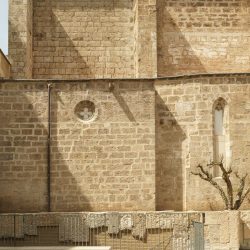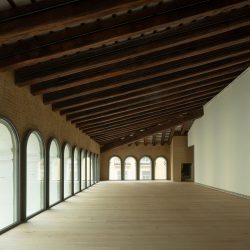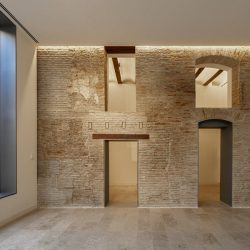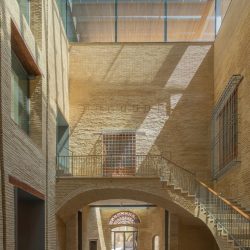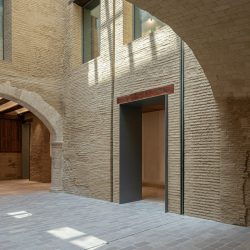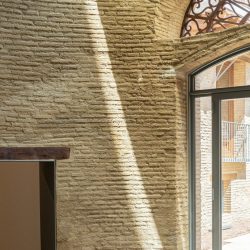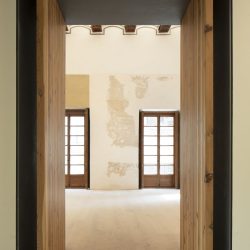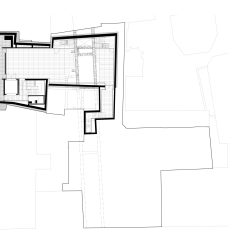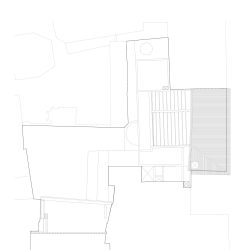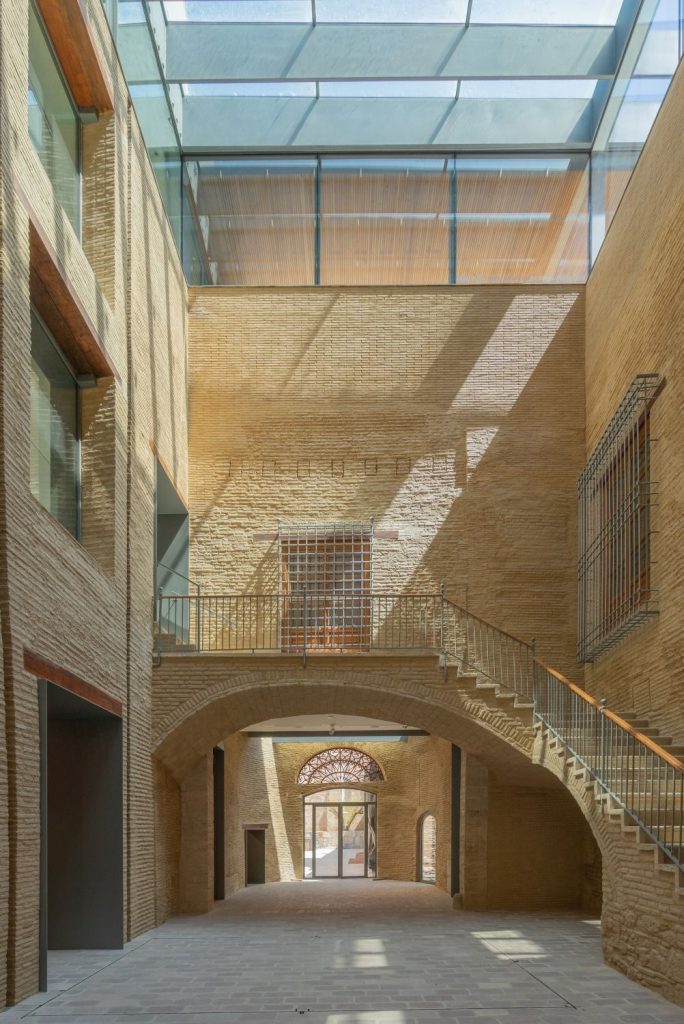
The objective of the Hortensia Herrero Foundation is to promote interest, knowledge and sensitivity for art and culture through projects created in the Valencian Community by artists from all over the world.
CHALLENGE
This intervention involves the recovery of a unique and historic building in the city of Valencia. Visitors will be able to contemplate the remains of the Jewish quarter and part of the ruins of the Roman circus, which crossed the ground floor of the Palace.
STRATEGY
The aim is to materialize and bring to fruition the two objectives set by the Hortensia Herrero Foundation in a laborious, delicate and demanding process: to protect the historical artistic heritage of the Valencian Community and to promote a space dedicated to art with a contemporary and international vocation.
The new museum will house the valuable private collection of patron Hortensia Herrero. This collection includes works by renowned artists such as Andreas Gursky, Anselm Kiefer, Georg Baselitz, Anish Kapoor and Mat Collishaw, among others. In this regard, it is worth highlighting the figure of Javier Molins as artistic director of the Hortensia Herrero Art Center and his key role in the construction of the collection for more than 10 years.
The intervention proposes a natural continuity between the old and the new, a continuity with what has already been built, as another episode in the history of the building. During the museum tour, visitors will be able to enjoy contemporary art, discover part of the Roman circus of Valencia or see the original wooden beams and the ceramic masonry of the main hall.
SOLUTION
The façade has been restored to its original state during its early 19th century renovation, the original paving of oak cobblestone has been maintained, and the improper modern elements that were added in the last decades during the different phases of the building have been eliminated.
The chapel of the building has been restored and reconstructed, adapting it as another room of the future Hortensia Herrero Art Center. Likewise, the street of the old Jewish quarter is respected as a trace of the past and an outdoor space. The garden is presented as another room of the museum, but outside, coexisting with a clear presence of green element and water, being a tribute to the Arab courtyard that once was.
The andana, the most emblematic space, will retain its character with its arched windows and original wooden beam roof. Finally, the viewpoint is conceived as a stop on the museum tour from which to contemplate the surroundings.
_
CLIENT
FUNDACIÓN HORTENSIA HERRERO
LOCATION
VALENCIA
DATE
2017
SIZE
3.500 M2
CATEGORY
PUBLIC SPACE, CULTURE
STATUS
FINISHED
CONSTRUCTOR
URANSA S.L.
PHOTOGRAPHY
DAVID ZARZOSO
VIDEO
PEDRO PEGENAUTE
COLLABORATORS
JESÚS SANCHEZ CARPENTERS / IBIDIART S.L. RESTORERS / METÀLIQUES / CARPINTERIAS METÁLICAS EULOGIO / ALUMILUX CARPINTERIAS / MÁRMOLES MABELLO / GM PAISAJISTAS /JAVIER MOLINS
CLIENTE El objetivo de la Fundación Hortensia Herrero es promover el interés, el conocimiento y la sensibilidad por el arte y la cultura a través de proyectos creados en la Comunidad Valenciana por artistas de todo el mundo. DESAFÍO Esta intervención supone la recuperación de un edificio singular e histórico de la ciudad de València. Los visitantes podrán contemplar los restos del barrio judío y parte de las ruinas del circo romano, que atravesaba los bajos del Palacio. ESTRATEGIA Se pretende materializar y llevar a buen término los dos objetivos marcados por la Fundación Hortensia Herrero en un proceso laborioso, delicado y exigente: proteger el patrimonio histórico artístico de la Comunitat Valenciana y promover un espacio dedicado al arte con vocación contemporánea e internacional. El nuevo museo albergará la valiosa colección privada de la mecenas Hortensia Herrero. Esta colección incluye obras de renombrados artistas como Andreas Gursky, Anselm Kiefer, Georg Baselitz, Anish Kapoor y Mat Collishaw, entre otros. En este sentido, cabe resaltar la figura de Javier Molins como director artístico del Centro de Arte Hortensia Herrero y su papel clave en la construcción de la colección desde hace más de 10 años. La intervención plantea una continuidad natural entre lo viejo y lo nuevo, una continuidad con lo ya construido, como un episodio más en la historia del edificio. Durante el recorrido museístico, los visitantes podrán disfrutar del arte contemporáneo, descubrir parte del circo romano de València o ver las vigas originales de madera y el revoltón cerámico de la sala noble. SOLUCIÓN Se ha devuelto la fachada a su estado original en su reforma de principios del siglo XIX, se ha manteniendo el pavimento original de adoquín de rodeno y se han eliminado los elementos impropios modernos que se añadieron en las últimas décadas durante las distintas fases del edificio. La capilla del inmueble se ha restaurado y reconstruido adaptándola como una sala más del futuro Centro de Arte Hortensia Herrero. Asimismo, la calle de la antigua judería se respeta como huella del pasado y espacio exterior. El jardín se presenta como una sala más del museo, pero exterior, conviviendo con una clara presencia de elemento verde y de agua, siendo un homenaje al patio árabe que en su momento fue. La andana, el espacio más emblemático, conservará su carácter con sus ventanas en arco y la cubierta de vigas de madera originales. Finalmente, el mirador se concibe como un alto en el recorrido museístico desde el que se puede contemplar el entorno.


